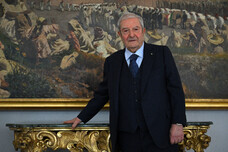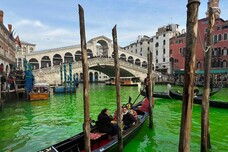Ettore Majorana, the brilliant Italian physicist who disappeared without trace in 1938, resurfaced in 1955-59 when he was living voluntarily in the Venezuelan town of Valencia, Rome prosecutors said Wednesday.
The discovery puts to rest many of the theories proposed by relatives and acquaintances, that Majorana had committed suicide or had been murdered or even that he had taken refuge in a convent.
Prosecutors investigating the case said the most likely hypothesis is that Majorana was frightened after he made his discoveries about the atom, and decided to disappear.
Majorana, whom Enrico Fermi called a genius on the level of Galileo Galilei and Newton, disappeared in 1938 during a boat trip from Palermo to Naples.
In 2011, Rome prosecutors reopened an investigation into the disappearance, and with Wednesday's announcement, they are officially requesting the investigation be closed.
Italian forensic police analyzed a photo taken in Venezuela in 1955, in which Majorana appears under the surname Bini, together with an Italian emigrant named Francesco Fasani.
The photo analysis revealed that the anatomical facial features of Majorana in the photo are perfectly matched when superimposed onto those of his father.
Prosecutors said Fasani also found a postcard in Bini-Majorana's car, dated 1920 and written by Majorana's uncle Ettore, also a famous physicist, to an American named W.G.
Conklin, which they say proves the identity of the man as Ettore Majorana.
ALL RIGHTS RESERVED © Copyright ANSA











